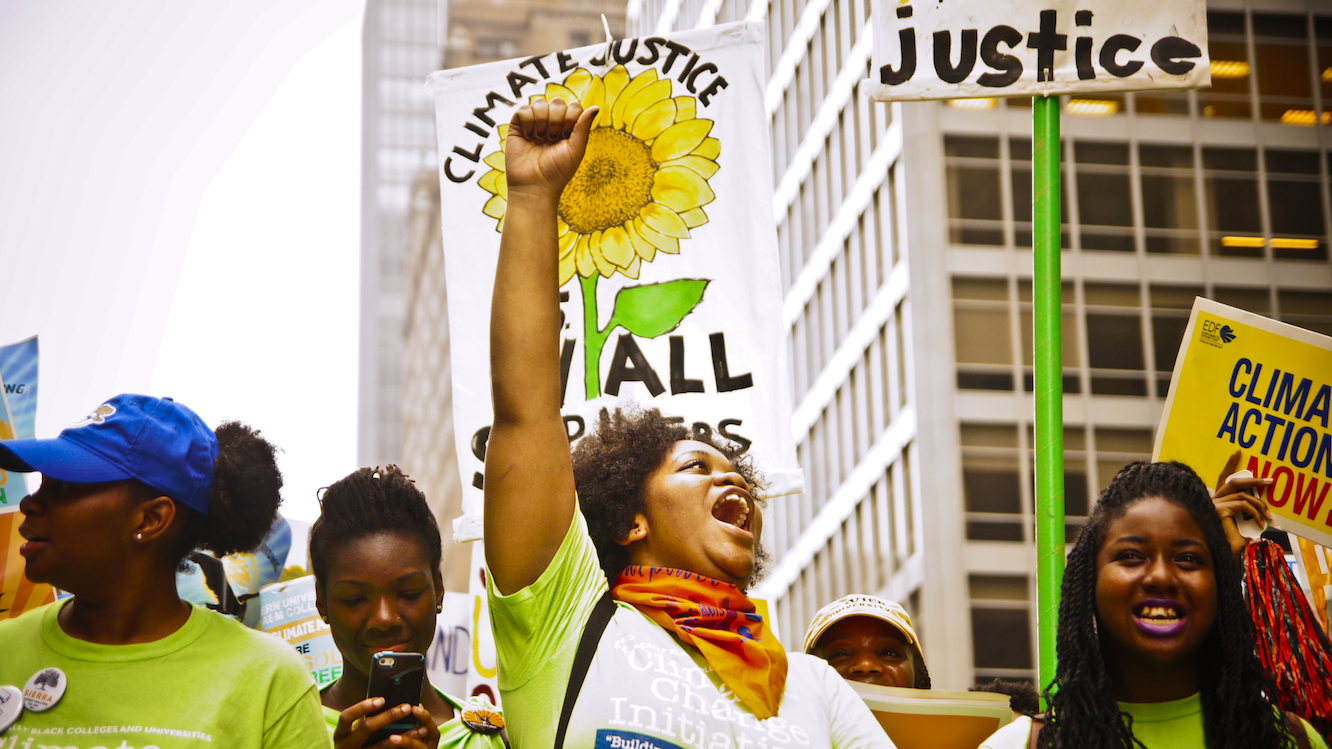“Protecting the planet is also about protecting the people on it.”
– Elsa Mengistu, Youth Climate Activist, Operations Director at Zero Hour
We are saddened and angered by the murder of George Floyd, yet another death of a person of color under the boot of systemic racism and police brutality. We stand with anti-racist activists protesting this broken system.
We must all do what we can in our personal lives. But we can also make a difference in our professional work in the green building movement.
We must be actively anti-racist, work to combat the systemic inequities in our built environments and organizations. We must educate ourselves. We must listen to the experiences of Black people. We must call out racism in our (historically white) environmental movements, in the disproportionate suffering of people of color in our public health crises, and in the very fabric of our buildings. We must fight environmental racism, beginning in our own work.
As environmentalists, we understand the importance of systems-level change. Anti-racist activists, climate justice organizations, green building educators—we are all working towards the same goal: a safe, just, and sustainable world for all people. We must support each other in this work.
We can all start somewhere. We’ve begun by pulling together resources on racial inequality in the built environment and environmental justice from organizations leading change. We’d love to hear from others who are also learning about how to take action on these issues.
We must keep working. For people and planet.
Environmental Racism and Environmental Justice
Environmental Racism is the disproportionate impact of environmental hazards on people of color1.
Environmental Justice can be much harder to define. The environmental justice movement as we know it was launched in the 1980s, and took its lead from the Civil Rights Movement2. Grassroots environmental justice organizers make an important distinction between environmental justice and environmental equity. Environmental equity refers to the equal distribution of environmental pollution and toxins among race, class, gender, and other social indicators, while environmental justice pushes for an end to all environmental harms.
In lieu of a definition, consider learning the 17 principles of Environmental Justice, written by delegates of the First National People of Color Environmental Leadership Summit in 1991. These principles have served as a defining document for the growing grassroots movement for environmental justice3.
Here’s the history of environmental justice, summed up in less than 4 minutes, which references the video posted below by the U.S. EPA.
A place to start…
This is just the beginning of our education. Below is a list of resources to dive into.
“Are there two different versions of environmentalism, one ‘white,’ one ‘black’?” by Brentin Mock
A comprehensive list of key documents and background information on environmental justice and environmental racism from the Energy Justice Network
Environmental Justice fact sheet from the University of Michigan’s Center for Sustainable Systems
Centering Equity in the Sustainable Building Sector from the NAACP
Environmental Justice resources from Racial Equity Tools, a non-profit which supports individuals and groups working to achieve racial equity.
Racism in Planning and Design
“Architecture has a role to play in creating racial and cultural equity in space”
-Bryan Lee, Colloqate Design
Our cities and spaces are designed within the culture of systemic racism, and play a role in perpetuating inequity. Redlining, exclusionary development investment, the placement of highways and industrial sites in neighborhoods of color, and unequal access to public transportation all contribute to structural racism, as does a lack of POC in the architecture and design professions.
Isis Ferguson, the associate director of city and community strategy at Place Lab, explained in FastCompany the chasm between how different people may experience the city: “In cities in the United States, we cannot pretend that all bodies have the freedom to move through, occupy, and enjoy public space…The perception of black and brown bodies gathering in public space routinely reads as suspect, criminal, or illegitimate. If your very existence is read as a violation, is public space really for you?”
Ferguson offers a new planning approach: “Are there design solutions that promote social integration but also uphold the dignity of the people once they enter that space? Asking the typically untapped people–artists, misfits, outsiders, elders, immigrants, people of color, and women what the most joyous, liberatory, and authentic spaces are for them is a good start at imagining more for public life and for creating places of greater possibility for all in the public realm.”
We must also work to reduce barriers to entry in the architectural field for Black students, so that the profession is representative of the communities it serves. This starts with early outreach, including summer camps, presentations to middle schoolers and high schoolers about architectural careers. Higher Ed can work to provide scholarships for students of color, and to hire more minority professors to teach in accredited architecture programs. Employers can review their recruitment policies, raise awareness, and provide professional education and support to Black architects.
Above all, we must continue to read widely and expose ourselves to the deep history of racism in architecture, listen to Black voices on their concerns about new and old spaces, and recognize and react to internalized assumptions about what make space safe for all.
Read more in “How Urban Design Perpetuates Racial Inequality–And What We Can Do About It” in FastCompany.
Other resources on planning and environmental racism:
Listen to Design Justice architect Bryan Lee talk about privilege and power structures that use architecture and planning to create systems of injustice throughout the built environment.
SPARCC Hub, has planning resources for reducing racial disparities, building a culture of health, and preparing for a changing climate.
“Climate plans to ‘green’ cities must confront environmental racism” explains the necessary link between sustainability planning and equity (Otherness and Belonging Institute, August 2018).
The All-In Cities Policy Toolkit from PolicyLink offers a range of planning tools including Racial Equity Impact Assessments, inclusionary zoning, and equitable transit-oriented development.
The Design Justice Network offers strategies for centering marginalized people in the design process, “to sustain, heal, and empower our communities, as well as to seek liberation from exploitative and oppressive systems.”
Environmental Justice resources from Racial Equity Tools, a non-profit which supports individuals and groups working to achieve racial equity.
Header image is cropped from Climate Justice for all by Joe Brusky (



Leave a reply